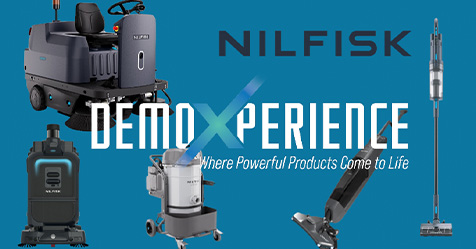Ian Greig, chief executive officer (CEO) of Daniels Associates Inc., made a presentation at the recent ISSA/INTERCLEAN North America trade show in Chicago titled, “10,000 Square Feet Per Hour.”
Quite frankly, I got to the presentation late, so I didn’t hear all that Greig had to say, but I do agree with him that production rates and expectations are continuing to increase, and we can expect that trend to continue.
Some will say this is impossible; others will say, “Okay — maybe, as long as you don’t care about the quality of the service being provided.”
But, the reality is that the processes and equipment exist today that allow a person to clean at 10,000 square feet per hour or more and do an excellent job.
The caveat is that you have to engineer the work and you need an understanding customer that won’t nitpick you to death over things that don’t matter.
You just can’t just give someone the keys and say, “I’ll see you at the end of the shift.”
Instead, you have to use all the latest technology, provide detailed training and supervision and you have determine ahead of time exactly what tasks and surfaces will be cleaned and when, along with how long it should take and which tasks and surfaces will not be serviced.
Forget Floor Finish
Another gasp was heard when Greig suggested that you can eliminate the use of floor finish, stripping and burnishing on vinyl composition tile (VCT) and get good shine by using diamond impregnated floor pads to polish the bare tile.
I’ve heard this before from industry insiders, as well from several pad manufacturers, but haven’t personally tried it — being that it’s a new concept, I’d have to say that the jury is still out on this one.
At the same time, new top guard, densifying and hardening-type products normally used on polished concrete are showing up in the marketplace and are being promoted for use on VCT tile.
The Right Equipment
 I’m always amazed at the underutilization of modern cleaning equipment by both in-house operations and contractors.
I’m always amazed at the underutilization of modern cleaning equipment by both in-house operations and contractors.
Two classic examples are the limited use of autoscrubbers and riding vacuums and sweepers.
Autoscrubbers used to be limited to use in very large, wide-open areas such as hallways and corridors, and that is still a great use for them.
But, what kills me is to see someone walking behind a machine when a rider would double their production rate; the same holds true for vacuum cleaners.
While strolling through the convention center at McCormick Place, I noticed a cleaner using a 20-inch walk-behind vacuum in a massive hallway.
I began to think, “Why isn’t she on a riding sweeper that would do 15,000 square feet per hour instead of using a walk-behind vacuum that does maybe 4,000 square feet per hour?”
In every case, the high cost is the labor, not the machine; yet, management doesn’t want to spring for the more expensive equipment that will produce great results and save on costs in the long run.
Robotics And Microfiber
Two different pieces of equipment, both of which are able to bring cost savings and quality to locations where appropriately used, and both of which are underutilized.
On one hand, managers complain about the high cost of labor and ongoing problems with turnover, grievances, claims and training, but refuse to consider the use of a robotic scrubber or vacuum that just keeps on cleaning as long as you charge the batteries.
Are we just gluttons for punishment or what?
The technology exists, yet we keep on doing the same thing day after day and wonder why nothing changes.
Isn’t that the definition of insanity? 
Sure, microfiber cloths and mops cost more, but there is no comparison when it comes to the quality of the end product or cost saving in labor when compared to traditional cotton products.
However, we continue to purchase string mops by the caseload month after month, while we toss out the excuse that the cleaners don’t like them and they have to be laundered.
Bucketless mops are also available, but we don’t use them.
Why would anyone continue to buy buckets and wringers when they don’t have to?
The Bottom Line
If you want to be competitive in the marketplace, you can’t hang on to outdated processes and equipment; it just won’t get the job done or close the sale when your competition knows a better and faster way.
I just don’t get it.

